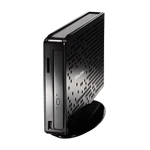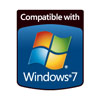
Home >
Products > Mini-PC & AIO > XPC fanless > XS35
XS35

Slim and Quiet
At just 38.5mm thin, the slim design is not only space-saving for projects or applications where space is critical, but it fits easily into any environment with the ability to be mounted behind a LCD TV or LCD monitor. It’s completely fanless – by design. The internal layout has been meticulously engineered to require no fan, so it’s not only quiet and low in energy use, but also dust-free and virtually maintenance free.Just sit back and indulge yourself in a relaxing, non-stressful moment in the day.

Intel® Atom™ Processor D510
The Intel® Atom™ Processor D510 delivers low power, enabling small, quiet desktops in new places around the home. The Intel Atom processor, combined with the Intel® NM10 Express Chipset, offers best-in-class capabilities. Getting online, having fun and getting things done are just like a breeze.
Fanless Design- Quiet, Dust-Free, and Energy-Efficient
It’s a conventional way using a fan as a cooling solution to dissipate heat away inside a computer. It usually generates noise, draws dust into the system as well as takes up the inner space. The Shuttle XS35 is fanless by design and ensures a passively cooled, quiet, dust-free and low in energy use operating environment.
VESA Mount Capability
Designed to fit seamlessly into your lifestyle, the Shuttle Slim XS35 Nettop PC is capable of mounting to the rear of a LCD monitor or a TV. This space saving capability makes it easy to blends into any of your environment.
















